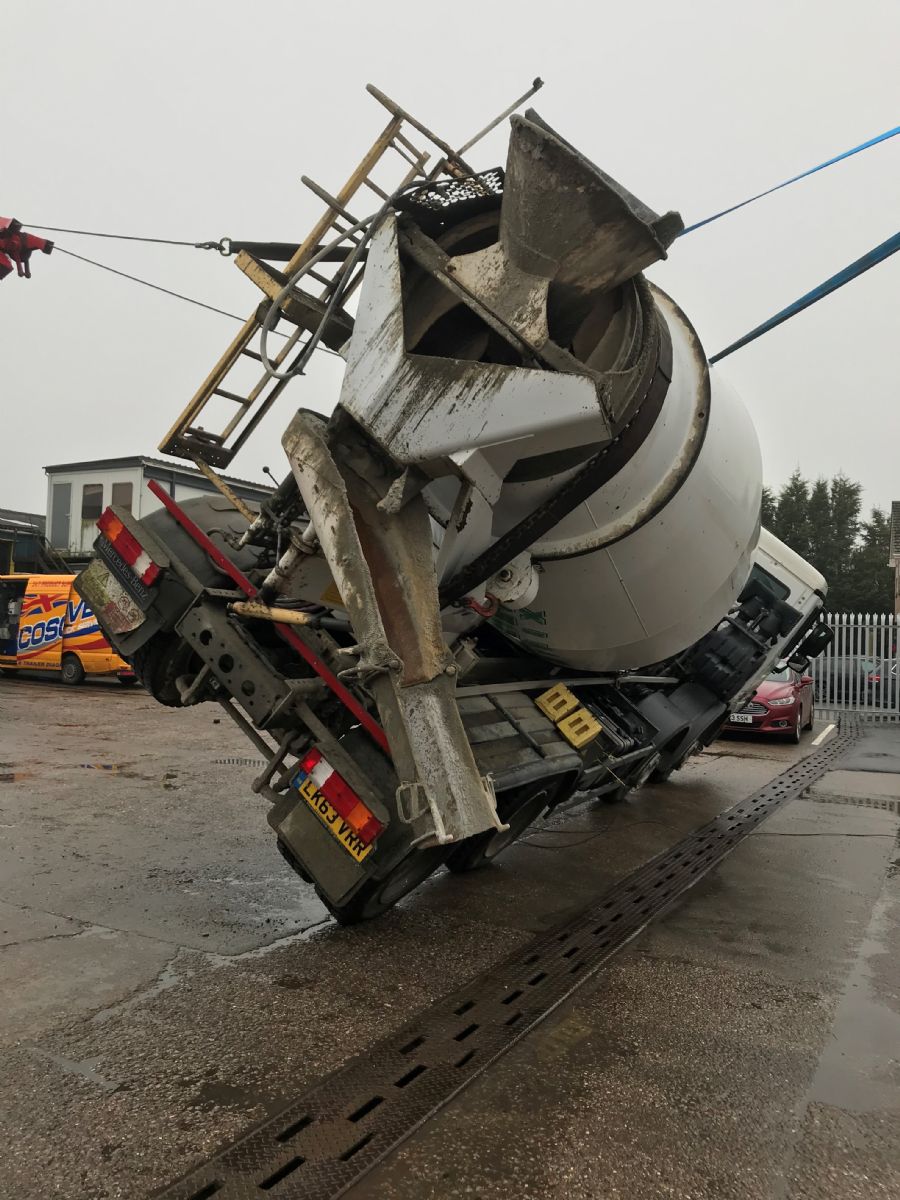FINALIST - TOPIC 5
According to concreteconnect.co.uk, there were 28 concrete mixer rollovers across our roads in 2023, with more on sites up and down the country that were not necessarily recorded.
Vehicles with a particularly high centre of gravity, for example concrete mixers, are more susceptible in certain conditions to rollover because of their design configuration, shape and load position.
Rollovers typically occur during cornering, rapid lane or road position changes, and low or adverse road surface grip conditions. This is where centrifugal force acting through a vehicle’s centre of gravity causes it to lean. The magnitude of the centrifugal force will increase as speed and turning angle increase, resulting in a rollover.
‘Rollover threshold’ is the term for a truck’s ability to resist rollover. A vehicle’s rollover threshold is directly affected by the way in which the vehicle is set-up (loads, tyre pressure, suspension etc.).
Driver behaviour and error are the main cause of rollovers, often due to speed, distraction, fatigue, load condition, interpretation of road layout, weather and mechanical condition. Concrete mixer vehicles are inherently more susceptible to potential rollovers due to the nature of the load carried. Small changes in road camber and road surface can result in rollovers at very low speeds and this is further exaggerated when carrying different types of loads.
CEMEX UK decided to investigate whether it would be possible to develop a simple driver warning system that would help prevent rollovers.
Please watch the video to find out the system they developed and the experimental work undertaken in developing it.
